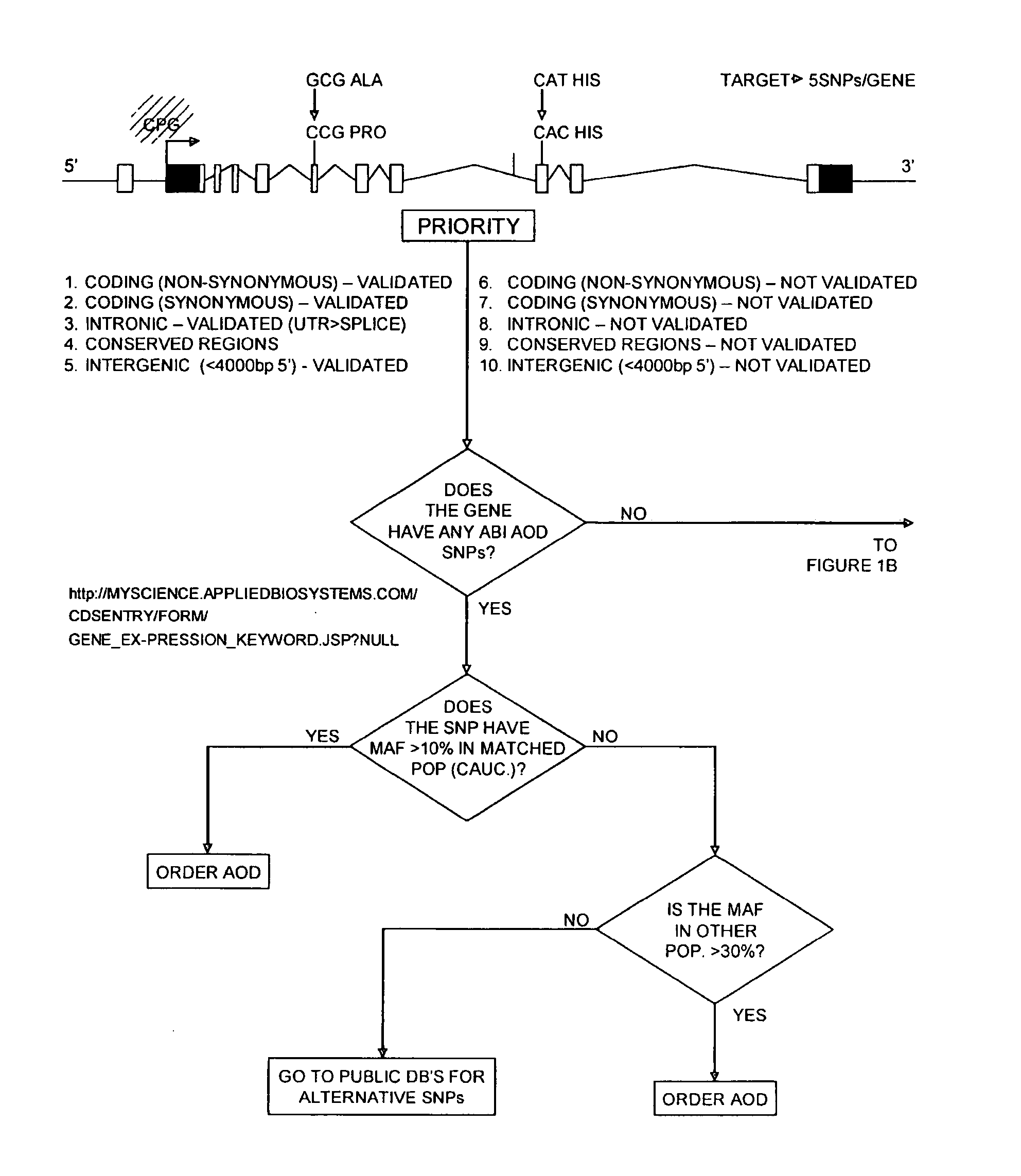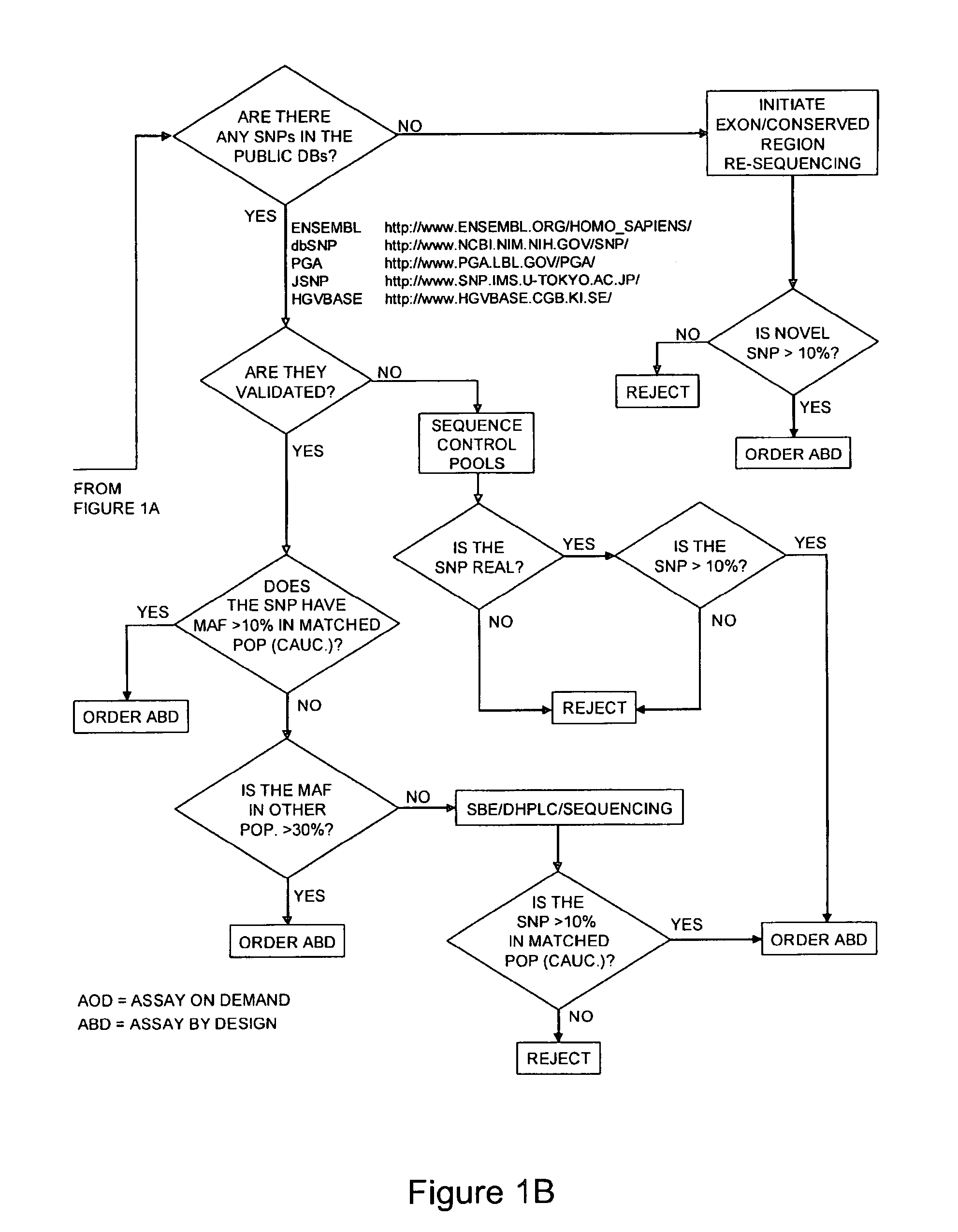Methods of Determining the Risk of Developing Coronary Artery Disease
- Summary
- Abstract
- Description
- Claims
- Application Information
AI Technical Summary
Benefits of technology
Problems solved by technology
Method used
Image
Examples
Example
Example 1
Identification of Human Alleles and SNPs Determinative of CAD
[0157]Cardiovascular disease (CVD) is the leading cause of morbidity and mortality in the United States. Among the risk factors for cardiovascular disease are behavioral (e.g.) smoking, sedentary lifestyle, or poor diet), age and health-related (e.g. diabetes, hyperlipidemia or hypertension), and genetic factors. Family history as a general marker for genetic risk is one of the most consistently identified risk factors for CVD, yet there are no examples of genes known to increase risk in even a fraction of individuals with CVD. One of the reasons that these genes are so difficult to find is that the genetic effects of any given gene are likely to be small and are likely to interact with other genes. In addition, these effects are likely to manifest themselves at different ages and stages along the CVD continuum.
[0158]The Approaches for Genomic Discovery in Atherosclerosis (AGENDA) study was initiated to discover g...
Example
Example 2
Methods for Genotyping of the Cathgen Samples and Statistical Analysis Early Onset CAD Case Control Sample (CATHGEN)
[0166]CATHGEN subjects were recruited sequentially through the cardiac catheterization laboratories at Duke University Hospital (Durham, N.C.) with approval from the Duke Institutional Review Board. All subjects undergoing catheterization were offered participation in the study and signed informed consent. Medical history and clinical data were collected and stored in the Duke Information System for Cardiovascular Care database maintained at the Duke Clinical Research Institute [1].
[0167]Controls and cases were chosen on the basis of extent of coronary artery disease as measured by the CAD index (CADi). CADi is a numerical summary of coronary angiographic data that incorporates the extent and anatomical distribution of coronary disease [2]. CADi has been shown to be a better predictor of clinical outcome than the extent of CAD [3]. Affected status was determin...
PUM
| Property | Measurement | Unit |
|---|---|---|
| Temperature | aaaaa | aaaaa |
| Fraction | aaaaa | aaaaa |
| Fraction | aaaaa | aaaaa |
Abstract
Description
Claims
Application Information
 Login to View More
Login to View More - Generate Ideas
- Intellectual Property
- Life Sciences
- Materials
- Tech Scout
- Unparalleled Data Quality
- Higher Quality Content
- 60% Fewer Hallucinations
Browse by: Latest US Patents, China's latest patents, Technical Efficacy Thesaurus, Application Domain, Technology Topic, Popular Technical Reports.
© 2025 PatSnap. All rights reserved.Legal|Privacy policy|Modern Slavery Act Transparency Statement|Sitemap|About US| Contact US: help@patsnap.com



